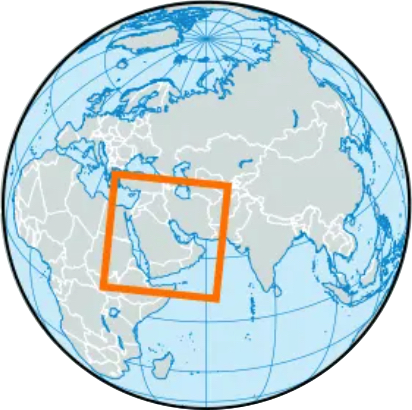 Natural products
Natural products
This goal assesses whether countries are maximizing the sustainable harvest of non-food marine resources.
Overview
Marine natural products can provide substantial economic benefits when sustainably harvested and traded. For example, millions of marine ornamental (aquarium) fish are harvested and exported for sale each year. This trade can provide a valuable and long-term income stream for low-income coastal communities if undertaken in a sustainable manner.
For the Red Sea and Gulf of Aden region, this score is driven almost entirely by the fish oil/fish meal trade. The one exception is that ornamental fish trade comprises about 18% of Israel’s Natural Product score, the rest of the countries have very little (i.e., < 1% of score) or no ornamental fish trade.
Scores
The Natural Products score for the Red Sea and Gulf of Aden region was 88.
The scores in this region are fairly high. There are no data for Sudan and Djbouti. This could result if these regions do not trade these products, or, alternatively, from data limitations.
The interactive map below shows the scores for the different countries.
Model description
This goal score is based on the sustainable harvest quantity, relative to some target, of marine natural products such as seaweed and marine plants, sponges, shells, fish oil and meal, and marine ornamental fish. This goal does not include bioprospecting which focuses on potential (and largely unknowable and potentially infinite) value rather than current realized value, or non-living products such as oil and gas or mining products which by definition are not sustainable. Ideally targets are based on the amount of harvest that does not threaten future harvest, such as the maximum sustainable yield from fisheries stock status scores.
Currently, the global Ocean Health Index includes harvest and production of non-food seaweed, ornamental fish, and wild-caught fish used for fish oil and meal.
A high score indicates that natural resources are maximally harvested at a rate that does not threaten future harvest and minimizes ecological harm.
A closer look at the data
The biggest factor driving scores, by far, is the current status component. Here, we take a closer look at the data underlying the status scores for each country with EEZ territory in the Red Sea and Gulf of Aden.
:::{callout-note collapse=TRUE}
Other components of an OHI score: Pressures, resilience, and trend
OHI scores are primarily driven by the current status dimension of the score, but pressures, resilience, and past trends are also important components of the goal score. In most cases, these variables will nudge the score a bit higher or lower than the current status score.
There are over 20 pressure variables (e.g., ocean warming, ocean acidification) and about 15 resilience variables (e.g., good governance and high gdp) used in the global assessment.
Each country gets a score for each pressure and resilience variable. For example, for each country we estimated the intensity of increase in ocean temperature, and rescaled these data to range from 0 to 1 (no pressure vs. highest pressure).
Each goal is affected by a subset of the pressure and resilience variables.
We provide a brief description of all the pressure and resilience variables along with how they affect each goal. A brief description of how these variables are incorporated into the final score is here. :::
Current status
For this region, fishoil and fishmeal drives the Natural products score. The one exception is that Israel collects ornamental fish for the aquarium trade, and this comprises about 18% of its score. No seaweed is grown for non-food purposes in any of the regions.
Fish oil / Fish meal
We focus on fish oil and meal because there is no seaweed production and the only producer of aquarium ornamentals is Israel.
Scores reflect the sustainability of marine fisheries for the species used for the production of fish oil and fish meal. The scores are scaled to values between 0 and 1, with one indicating that the stocks are managed sustainably. The model is similar to the fisheries subgoal model.
Implications
This score is primarily driven by the harvest of fish for fish oil and fish meal products, which are primarily used for animal feed (land and marine farming). The fish oil/fish meal component of the score is calculated using a model similar to that used for the marine fisheries subgoal. In this case, the model only includes fish used to produce fish oil and meal. The scores for this goal are reasonably good, with room for improvement, for most of these regions (> 0.8), but Egypt’s score is a bit low (score = 0.75)
For Israel, nearly 20% of the score is based on the harvest of ornamental fish for the aquarium trade. According to our limited data, the risk to these species in this region is low.
Future assessments should consider: - Are there other natural products harvested from the region that are currently not accounted for? - Do better data exist?
Other OHI+ analyses have revised this goal to better reflect local concerns.
